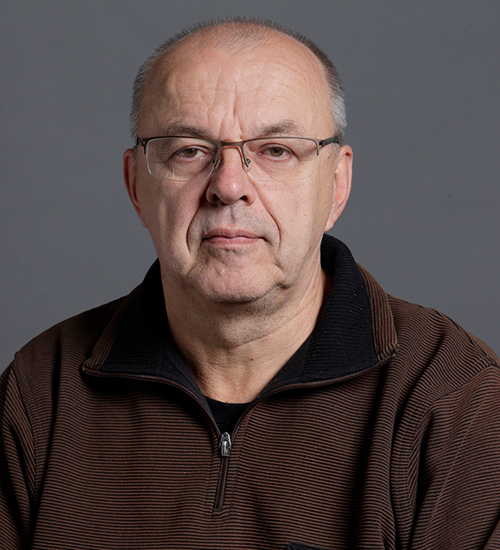Zsolt Gyenes
Hungary

Wobbulator – Early Media Instruments Today (W–EMIT)
PRESENTATION: FRIDAY – 21 April, 2023, 10:00 @ University of Applied Arts Vienna
The talk/presentation focuses on the use and rolling of such early media instruments today as Raster Manipulation Unit (Wobbulator) and Jones Colorizer/Mixer. Such extracts from artworks of contemporary artists will ‘color’ the presentation like Kalpana Subramanian, Walter Wright, Sara Bonaventura, Scott Kildal, and the author.
The different media are not perceived as one complementing the other but are built together where one is determined by the other. One can step from one to the other through different transcoding, with the presented end product that can be termed as a visible acoustic (Visual Music). One can highlight the fact that an image can yield sound, and sound can yield an image, while the numeral value of the basic information is usually equal.
Both types of image-making, electric analog and digital, have their different creative uses and strengths, but to lose analog video as an artistic medium would be a tragic loss.
Since the 1970s, with the advances in electronic technology, sound, and image could easily be manipulated in real-time. Every parameter of each electro-medium can be converted into data, and then used as an input in the other medium. The electronic era allowed the birth of a new kind of real-time performance and a new kind of artistic method or/and attitude.
Most of the analog works have rich organic textures stood out visually. An analog image is always in motion, redrawing itself with slight differences with each recursion. It is saturated with ‘faults’, artifacts that are the ‘human face’ of the technique.
Analog video is an open, modular system consisting of different components. The image and sound are produced from the same source. They work together like musical instruments, and they can interact too.
Using the early media instruments one can make interactions with machines. These tools with analog audio-video processing make improvisations (“comprovisations”) possible. The artist who applied audiovisual electronics could create “anything” from “nothing”; the cores are the signals.
What are the characteristic features of hybrid audiovisual works of art? Through the new technology, audiovisual works of art experiment with new ways of merging sound and image, creating holistic works that meld traditional and new media through a software world, in search of realizing a new, “magical age”.
Biography
Zsolt Gyenes,habil. DLA (b. 1962)
He is a Hungarian intermedia artist, art theorist, and associate professor at MATE University Rippl-Rónai Visual and Performing Arts Institute (Hungary). His artistic practice is concerned with the process of translation and fusion between different forms of media, exploring the creative possibilities of what might be lost or gained through such interpretation and how to get new qualities of art. His works of art have been exhibited and screened widely in various international media art festivals and exhibitions in Europe, Asia, and the USA. He was an artist in residence in Signal Culture, Owego, NY, and Vermont Studio Center in the USA, Rome, Italy, Tar, Croatia, and Burapha, Thailand. He gave talks at different conferences and symposiums (e.g. Vienna, Austria, Valencia, Spain, Valletta, Malta, Madeira, Portugal, Cracow, Poland, St. Petersburg, Russia, Bodrum, Turkey, and Chonburi, Thailand). Seven of his books were published.
More: http://gyenes62.hu

